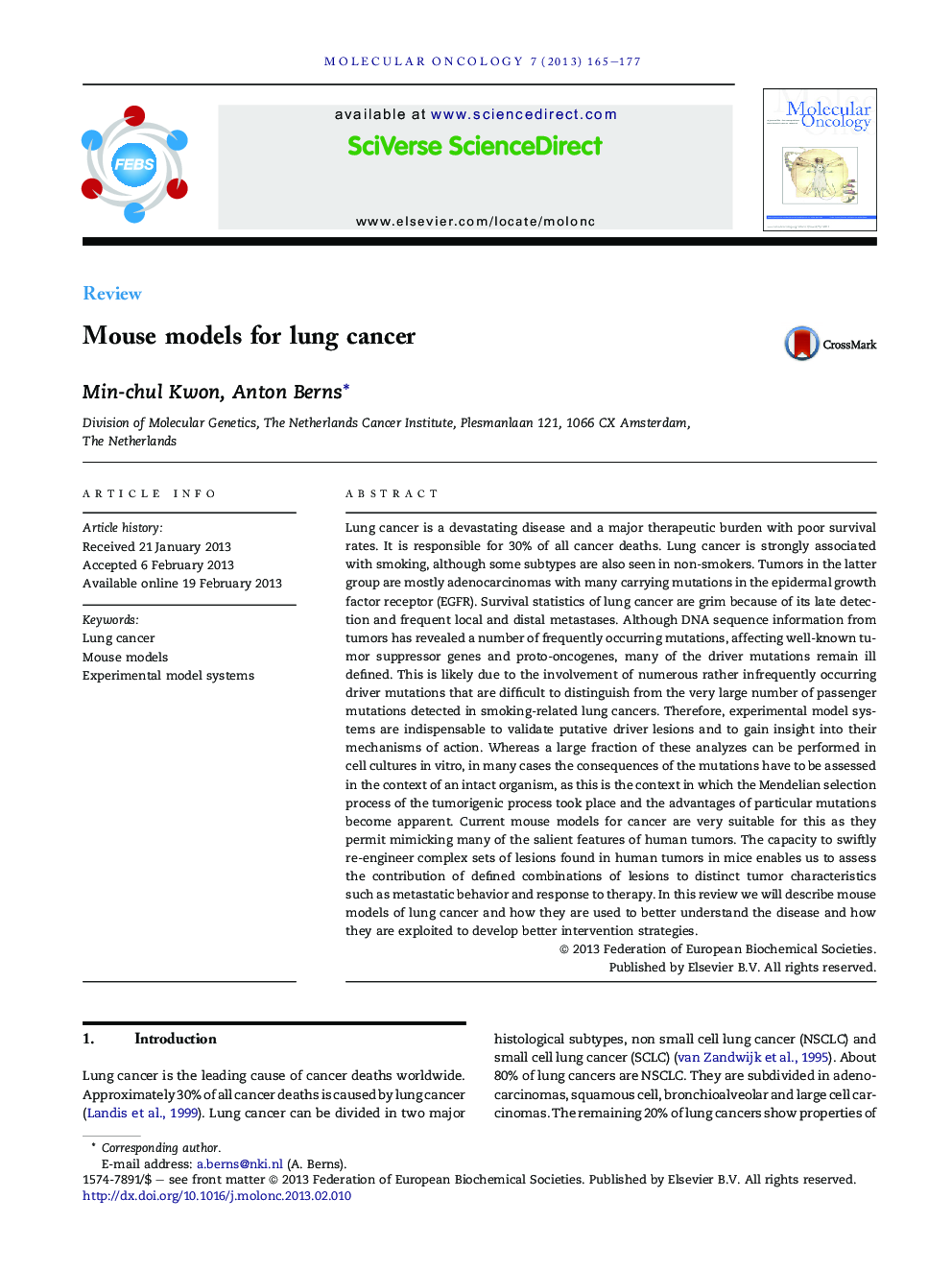| کد مقاله | کد نشریه | سال انتشار | مقاله انگلیسی | نسخه تمام متن |
|---|---|---|---|---|
| 10914716 | 1088808 | 2013 | 13 صفحه PDF | دانلود رایگان |
عنوان انگلیسی مقاله ISI
Mouse models for lung cancer
ترجمه فارسی عنوان
مدل موش برای سرطان ریه
دانلود مقاله + سفارش ترجمه
دانلود مقاله ISI انگلیسی
رایگان برای ایرانیان
کلمات کلیدی
سرطان ریه، مدل موش، سیستم های تجربی مدل،
موضوعات مرتبط
علوم زیستی و بیوفناوری
بیوشیمی، ژنتیک و زیست شناسی مولکولی
تحقیقات سرطان
چکیده انگلیسی
Lung cancer is a devastating disease and a major therapeutic burden with poor survival rates. It is responsible for 30% of all cancer deaths. Lung cancer is strongly associated with smoking, although some subtypes are also seen in non-smokers. Tumors in the latter group are mostly adenocarcinomas with many carrying mutations in the epidermal growth factor receptor (EGFR). Survival statistics of lung cancer are grim because of its late detection and frequent local and distal metastases. Although DNA sequence information from tumors has revealed a number of frequently occurring mutations, affecting well-known tumor suppressor genes and proto-oncogenes, many of the driver mutations remain ill defined. This is likely due to the involvement of numerous rather infrequently occurring driver mutations that are difficult to distinguish from the very large number of passenger mutations detected in smoking-related lung cancers. Therefore, experimental model systems are indispensable to validate putative driver lesions and to gain insight into their mechanisms of action. Whereas a large fraction of these analyzes can be performed in cell cultures in vitro, in many cases the consequences of the mutations have to be assessed in the context of an intact organism, as this is the context in which the Mendelian selection process of the tumorigenic process took place and the advantages of particular mutations become apparent. Current mouse models for cancer are very suitable for this as they permit mimicking many of the salient features of human tumors. The capacity to swiftly re-engineer complex sets of lesions found in human tumors in mice enables us to assess the contribution of defined combinations of lesions to distinct tumor characteristics such as metastatic behavior and response to therapy. In this review we will describe mouse models of lung cancer and how they are used to better understand the disease and how they are exploited to develop better intervention strategies.
ناشر
Database: Elsevier - ScienceDirect (ساینس دایرکت)
Journal: Molecular Oncology - Volume 7, Issue 2, April 2013, Pages 165-177
Journal: Molecular Oncology - Volume 7, Issue 2, April 2013, Pages 165-177
نویسندگان
Min-chul Kwon, Anton Berns,
